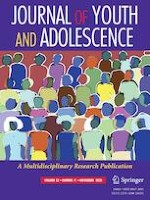01-08-2023 | Empirical Research
The Role of Ethnic-Racial Identity and Self-Esteem in Intergroup Contact Attitudes
Gepubliceerd in: Journal of Youth and Adolescence | Uitgave 11/2023
Log in om toegang te krijgenAbstract
Adolescents’ ethnic-racial identity (ERI) exploration, resolution, and affirmation inform their approach and avoidance attitudes toward intergroup contact, but the potential mechanisms through which this occurs have been underexplored. Given the evidence that adolescents with higher ERI exploration, resolution, and affirmation also report higher self-esteem, and self-esteem is theorized to facilitate openness to intergroup contact, the current study explored the role of self-esteem as a mediator of the relation between adolescents’ ERI and their intergroup contact attitudes. Participants were 4606 adolescents (Mage = 16.35, SD = 1.16; 37.5% White, 27.1% Black, 20.7% Latinx, 11.7% Asian American, 3% Native American) from the U.S. Southwest and Midwest. The three waves of data were collected between March 2017 and March 2018. Results from longitudinal multigroup path models indicated that across all ethnic-racial groups there were positive direct relations between Wave 1 (W1) ERI resolution and W2 self-esteem (7 months later). In turn, W2 self-esteem was positively related to W3 approach attitudes (12 months later) and negatively related to W3 avoidance attitudes. The relations between ERI resolution and both approach and avoidance attitudes were fully mediated by self-esteem across all ethnic-racial groups. Notably the baseline values (W1) of all mediation and outcome variables (W2, W3) were included, suggesting that ERI resolution at baseline predicted increases in self-esteem, which predicted subsequent increases in approach attitudes and decreases in avoidance attitudes. ERI exploration and affirmation were not significant predictors of later self-esteem or contact attitudes. These findings suggest that of the three dimensions of ERI examined, resolution is the primary driver of the increases in self-esteem that inform adolescents’ attitudes towards interaction with ethnic-racial outgroup members.
